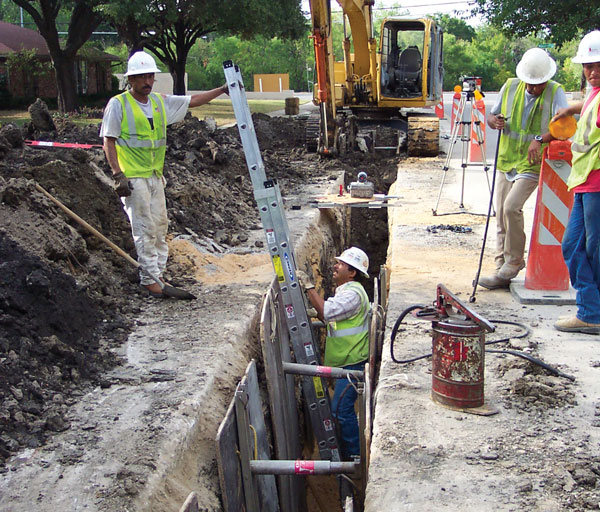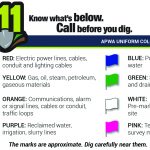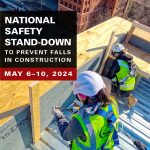
Trenching and Excavation Safety Reminders: Slope It, Shore It, Shield It
Trenching and excavation projects can present a serious hazard to all workers on a jobsite. OSHA defines an excavation as “any man-made cut, cavity, trench, or depression in the earth’s surface formed by earth removal.” Trenching cave-ins pose the greatest risk and are more likely than other excavation-related incidents to result in worker fatalities. OSHA has made reducing trenching and excavation hazards the Agency’s Priority Goal.
OSHA has three simple phrases/tips that are easy for everyone to remember.
Trenching and Excavation Safety Tips to Prevent Cave-ins Are:
- SLOPE or bench trench walls
- SHORE trench walls with supports, or
- SHIELD trench walls with trench boxes
Other key safety measures include, ensuring there is a safe way to enter and exit the trench, keeping materials away from the edge of the trench, and looking for standing water or atmospheric hazards. Remember, never enter a trench unless it has been properly inspected.
An unprotected trench can be an a very serious hazard. Employers must ensure that workers enter trenches only after adequate protections are in place to address cave-in hazards.
Trench/Excavation Safety is Everyone’s Job
It’s important that you share the details of your safety and health programs with ALL your employees, so they understand the requirements and are part of the solution. You need to emphasize the critical role your workers play in keeping the jobsite safe. Emphasize specific practices that will help reduce the risk of on-the-job injuries at excavation sites.
Such practices can include the following:
- Know where underground utilities are located before digging
- Keep excavated soil (spoils) and other materials at least 2 feet (0.61 meters) from trench edges
- Keep heavy equipment away from trench edges
- Identify any equipment or activities that could affect trench stability
- Test for atmospheric hazards such as low oxygen, hazardous fumes, and toxic gases when workers are more than 4 feet deep
- Inspect trenches before each shift, and following a rainstorm or other water intrusion
- Inspect trenches after any occurrence that could have changed conditions in the trench
- Do not work under suspended or raised loads and materials
- Ensure that personnel wear high-visibility or other suitable clothing when exposed to vehicular traffic. Employers should consider establishing and maintaining safety and health management systems that provide systematic policies, procedures, and practices for protecting workers from job-related safety and health hazards
Have a Safety Checklist Before You Start!
Before preparing and starting excavation construction site, workers should know as much as possible about the jobsite itself, specifically the materials they will need to perform the work safely, and in compliance with OSHA standards.
A Safety Checklist may prove helpful when employers are considering new projects.
Here are some major safety factors to consider:
- Traffic
- Proximity and physical condition of nearby structures
- Soil classification
- Surface and ground water
- Location of the water table
- Overhead and underground utilities
- Weather
- Quantity of shoring or protective systems that may be required
- Fall protection equipment
- Number of ladders that may be needed
- Other equipment needs
Before beginning any excavation and trenching project, gather all the information your employees need through jobsite studies, observations, test borings for soil type or conditions, and consultations with local officials and utility companies. Being prepared and compliant is the best way to reduce the risk of jobsite accidents.
Compliance Consultants, Inc. is here to help you assess, manage and communicate the necessary safety and compliance measures you need to assure that your jobsite is safe.
For more information, and jobsite materials you can use to help communicate trenching and excavation measures check out these links below.
OSHA Fact Sheet
Trenching and Excavation Safety (osha.gov)
OSHA Video
https://www.osha.gov/trenching-excavation
OSHA Booklet
https://www.osha.gov/sites/default/files/publications/osha2226.pdf



